Pharoah Sanders
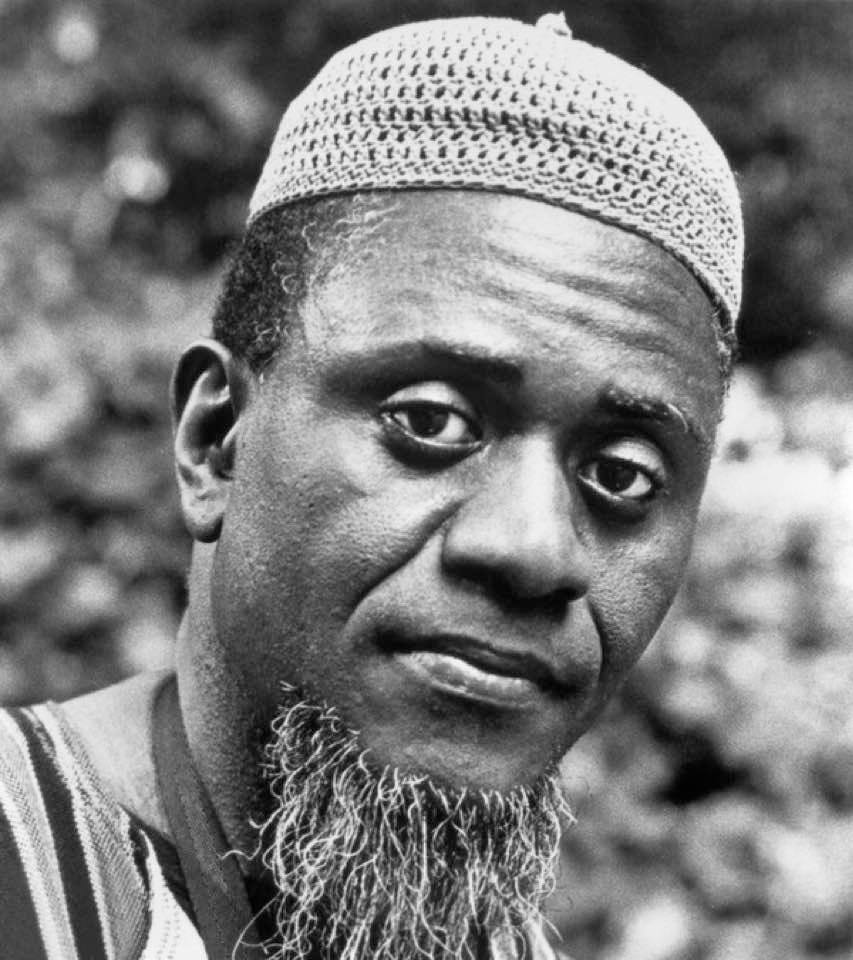
In the kaleidoscopic world of jazz, few names shimmer with the distinct vibrance of Pharoah Sanders. Born on October 13, 1940, in Little Rock, Arkansas, as Farrell Sanders, he was destined to be not just a musician, but a profound storyteller, a weaver of sounds that transcend the mere act of listening. His journey from the segregated South to the zenith of jazz royalty is a tale of resilience, innovation, and spiritual exploration.
Sanders, emerging in an era when jazz was undergoing seismic shifts, carved out a niche so unique that it transcends categorization. In a landscape dominated by giants like John Coltrane and Sun Ra, Sanders was not just a participant but a pioneering force, propelling the genre into the uncharted territories of free jazz and spiritual jazz. His music, a tapestry of ethereal textures and raw emotional power, speaks of a soul deeply attuned to the complexities and beauties of the human experience. It is not just music, but a journey into the soul’s most profound depths, a journey that Sanders invites his listeners to take with him.
Sanders’ saxophone is not merely an instrument but a voice, a cry, a chant that echoes through the annals of jazz history. From the pulsating streets of New York City to the serene landscapes of spiritual enlightenment, his music captures an essence that is both deeply personal and universally resonant. To listen to Sanders is to embark on a voyage that is as much about inner discovery as it is about musical exploration.
Let’s delve into the life and legacy of this extraordinary artist, tracing his footsteps from the humble beginnings to the pinnacles of musical innovation. We will explore the key moments, the collaborations, the breakthroughs, and the masterpieces that define the enigmatic and entrancing world of Pharoah Sanders. Join us on this journey, and discover the man behind the music, the legend behind the saxophone, and the spirit behind the sound that has captivated the hearts of jazz lovers around the world.
Early Life and Background
Pharoah Sanders’ story begins in the heart of the American South, in Little Rock, Arkansas, where he was born on October 13, 1940. Named Farrell Sanders at birth, his early years were steeped in the rich, albeit challenging, tapestry of the Jim Crow era. This period, marked by segregation and racial strife, paradoxically served as a crucible for the forging of some of the most influential African American artists, among whom Sanders would eventually count himself.
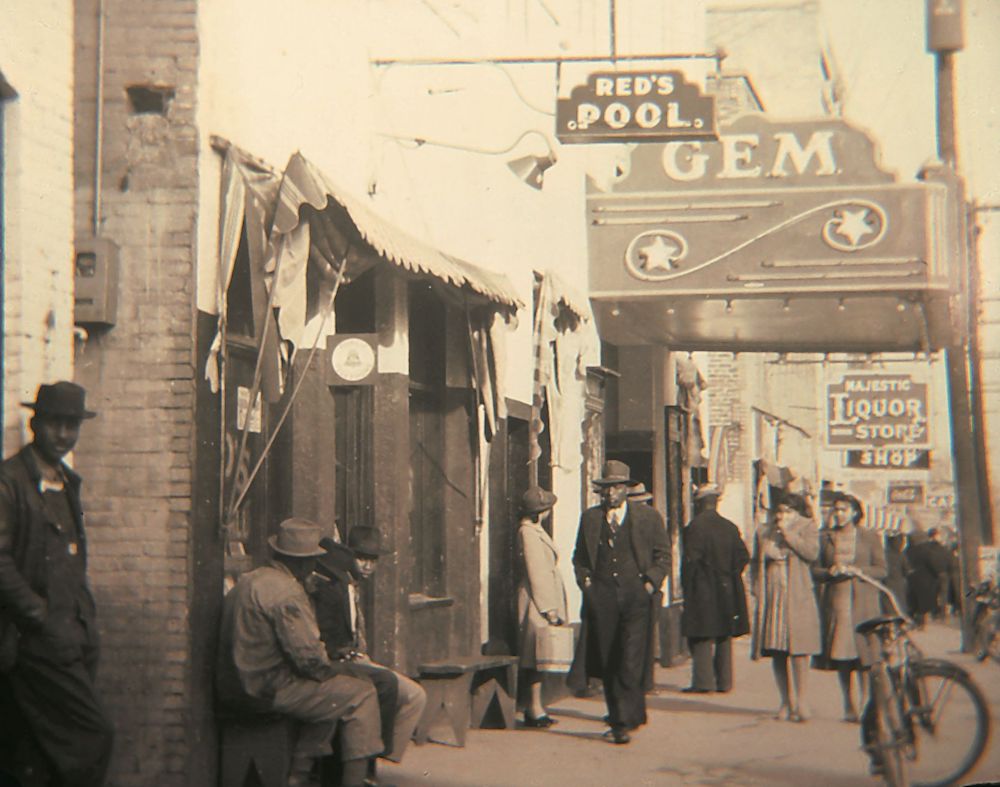
Growing up in a family where music was a cherished companion, Sanders’ initial foray into the world of music began with the clarinet, an instrument he played to accompany church hymns. The church not only provided Sanders with his first musical platform but also introduced him to the communal and spiritual aspects of music, elements that would profoundly shape his future works.
In his teenage years, Sanders made a pivotal switch to the tenor saxophone. This transition marked the beginning of his lifelong relationship with the instrument that would become his voice, his signature. The tenor saxophone opened doors to the world of blues, a genre deeply rooted in the African American experience, where Sanders began to play gigs around Little Rock for $10 to $15 a night around Little Rock. He backed up blues greats Bobby “Blue” Bland and Junior Parker. It was here, in the smoky bars and vibrant nightclubs of Little Rock, that Sanders started honing his craft, absorbing the rich legacy of blues and jazz that flowed through the city.
After graduating from high school, Sanders’ quest for musical growth led him westward to Oakland, California. In Oakland, he immersed himself in a burgeoning cultural scene, studying art and music. This period was crucial for Sanders, as he was exposed to a wider array of musical styles and influences. It was also here that Sanders began to develop his unique sound, one that would later resonate through the halls of jazz history.
The years in Oakland were transformative for Sanders. They were years of exploration, of finding his voice in the cacophony of sounds that defined the jazz world. This was a time of growth, of laying the foundation for what would become a monumental career in music. As we delve deeper into Sanders’ life and career, we will uncover how these early experiences in Little Rock and Oakland shaped the man who would become a titan of jazz, a pioneer of free jazz, and a spiritual voice in a genre that defies boundaries.
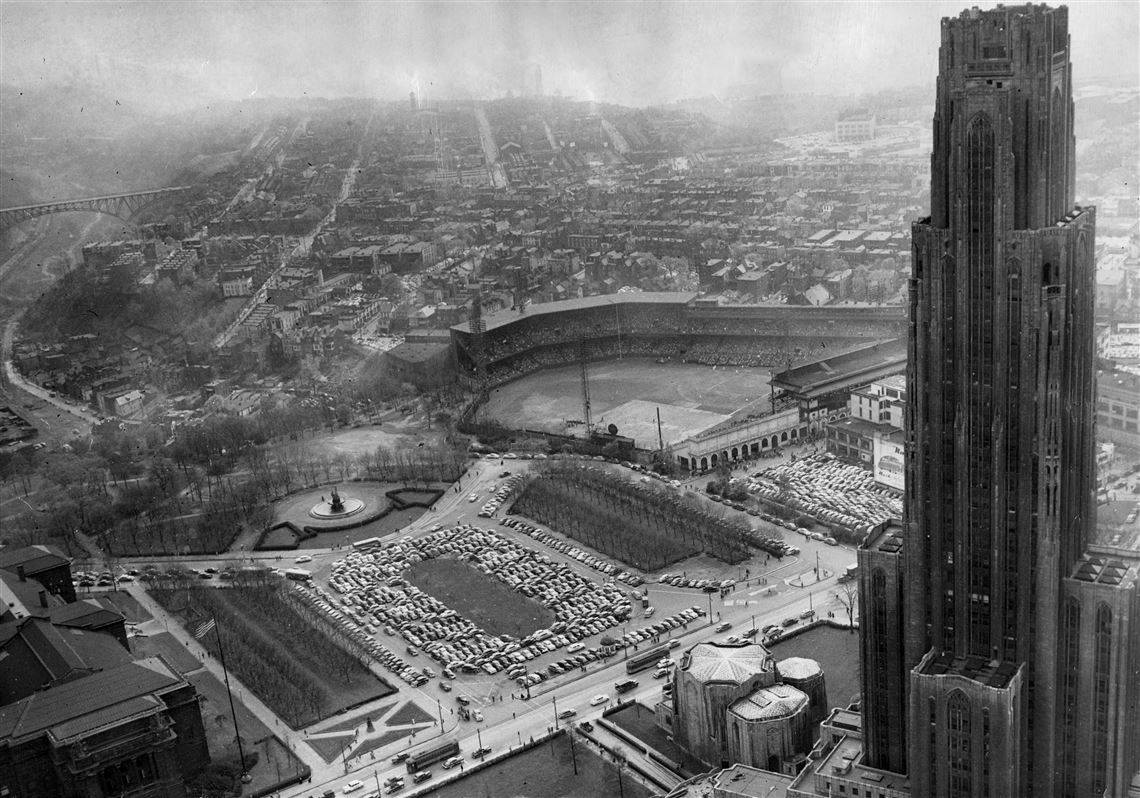
Musical Beginnings and Influences
Pharoah Sanders’ musical journey, rich in innovation and spiritual depth, began in the vibrant cultural milieu of the mid-20th century. His initial exposure to music came through the clarinet, which he played in his early years, but it was the saxophone that truly captured his artistic spirit. This transition marked a turning point in Sanders’ life, opening a new world of musical possibilities and setting the stage for his future explorations.
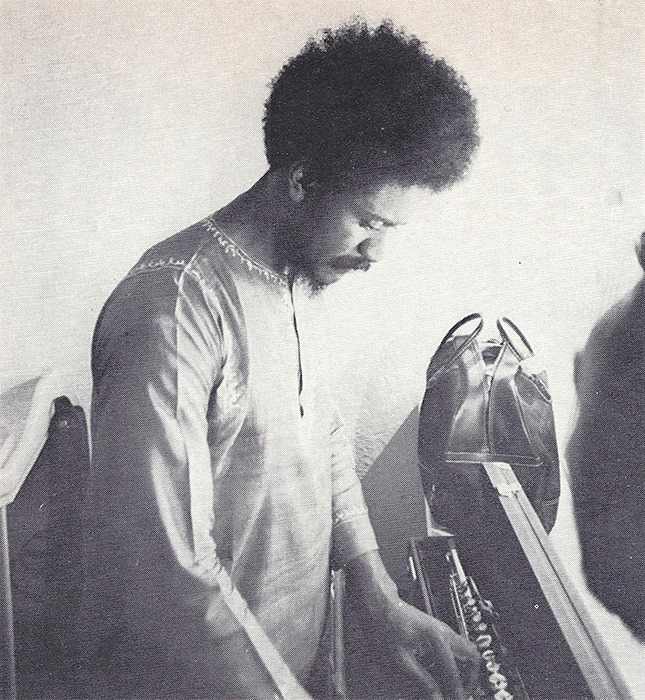
In high school, Sanders’ passion for music was further ignited, encouraged by Jimmy Cannon, a teacher who recognized his innate talent. Jimmy introduced Pharoah to jazz for the first time. Trading his clarinet for a saxophone, he delved into the depths of jazz and blues, genres deeply rooted in the African American experience. This was more than a mere change of instrument; it was an awakening, a realization of his calling as a musician.
The sounds of Little Rock, Arkansas, where Sanders grew up, were infused with the rhythms of the blues and the complexities of jazz. Here, Sanders absorbed the influences that would later shape his unique sound. His early favorites included jazz luminaries like Harold Land, James Moody, and Sonny Rollins, whose styles and techniques left an indelible mark on his developing musical identity.
However, it was his collaboration with John Coltrane, one of the most influential figures in jazz history, that profoundly shaped Sanders’ musical direction. Coltrane’s spiritual and avant-garde approach to jazz resonated deeply with Sanders, influencing him to incorporate elements such as chanting into his own work. This collaboration was more than a meeting of minds; it was a fusion of souls, each seeking to push the boundaries of jazz into new and unexplored territories.
Sanders’ music evolved into a wild, anarchic sound, characterized by its free-flowing structure and spiritual overtones. His work with Coltrane on albums like “Om” exemplified this new direction, blending the traditional with the transcendental, the structured with the spontaneous. This period marked Sanders’ emergence as a unique voice in jazz, one that would challenge and redefine the conventions of the genre.
As we explore Sanders’ musical beginnings and influences, we see a picture of an artist deeply connected to his roots, yet unafraid to venture into uncharted waters. Sanders’ early life in Arkansas and his influential collaborations in New York set the foundation for a career that spanned five decades, leaving an indelible mark on the world of jazz.
Move to New York and Early Career
The pivotal chapter in Pharoah Sanders’ life began with his ambitious move to New York City in 1962, a decision that would forever alter the trajectory of his career and the landscape of jazz music. Arriving at the height of the jazz revolution, Sanders found himself in the midst of a thriving, avant-garde music scene. This move was more than a geographical shift; it was a plunge into the epicenter of musical innovation.

In New York, Sanders encountered a world vastly different from the one he left in Oakland. The city’s vibrant jazz scene was pulsating with new ideas, challenging the boundaries of traditional jazz. Sanders, with his distinctive style and profound musicality, was ready to make his mark. His initial years in New York, however, were far from easy. He faced the harsh realities of life as an aspiring musician, including periods of homelessness. Yet, these struggles did not deter him; instead, they fueled his determination and sharpened his focus.
During this time, Sanders’ unique approach to the saxophone began to flourish. Known for his overblowing, harmonic, and multiphonic techniques, he was not just playing music; he was reinventing it. His sound was raw, emotive, and profoundly spiritual, resonating with the turbulence and excitement of the era.
Sanders’ big break came through his association with John Coltrane, one of the era’s most influential jazz musicians. Coltrane’s embrace of Sanders not only validated his talent but also introduced him to a wider audience. This collaboration was instrumental in shaping Sanders’ early career, as he absorbed and contributed to Coltrane’s explorations in free jazz.
In these formative years in New York, Sanders’ artistry deepened, and his reputation grew. He played at various venues across the city, from small jazz clubs to prominent stages, crafting a legacy that would define him as a key figure in the free jazz movement. The city, with its relentless energy and boundless creativity, was the perfect forge for Sanders’ burgeoning genius.
Collaboration with John Coltrane
The collaboration between Pharoah Sanders and John Coltrane stands as one of the most significant chapters in the history of jazz music. It was a union that not only shaped Sanders’ career but also left an indelible mark on the jazz genre. When Sanders joined Coltrane’s band in the mid-1960s, he was entering a space that was already pulsating with innovation and spiritual depth.
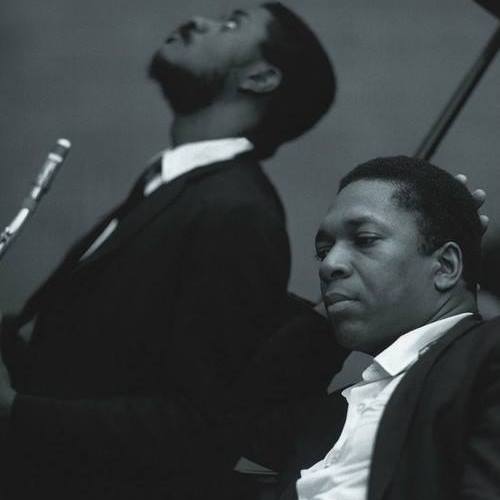
Coltrane, by then, had established himself as a towering figure in jazz, renowned for his exploratory approach and spiritual underpinnings. His quest for new expressions in jazz resonated deeply with Sanders, whose own musical inclinations leaned towards boundary-pushing and spiritual exploration. This collaboration was more than a meeting of two jazz musicians; it was a convergence of similar philosophies and a shared hunger for musical exploration.
In Coltrane’s ensemble, Sanders found not just a mentor but a kindred spirit. Together, they embarked on a journey that took jazz to new heights. Their music, often labeled as ‘free jazz,’ broke away from traditional structures and ventured into uncharted territories of sound and rhythm. It was in this environment that Sanders’ unique style – characterized by overblowing, harmonic, and multiphonic techniques – flourished.
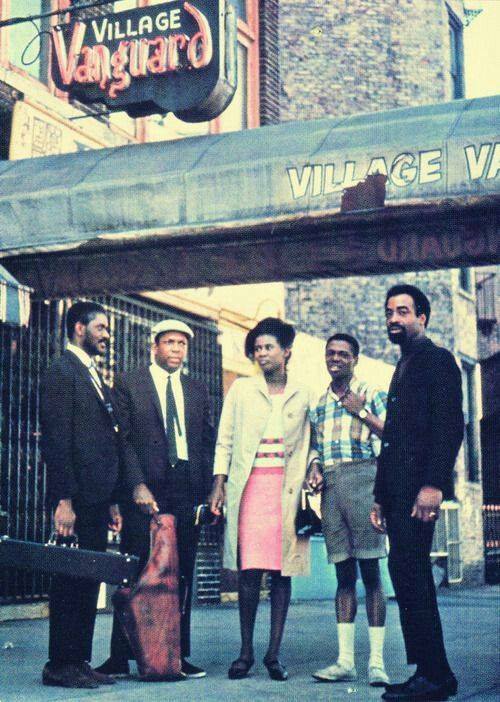
The duo’s collaborations yielded groundbreaking works that pushed the boundaries of jazz. Albums like “Ascension” and “Meditations” are prime examples of their synergistic creativity. These works were not just collections of songs but explorations into the realms of spirituality and expression. They challenged listeners’ perceptions of what jazz could be, blending intense improvisations with deeply meditative passages.
Coltrane’s influence on Sanders cannot be overstated. Through their collaboration, Sanders absorbed elements of Coltrane’s style and spiritual approach, which he would later weave into his own unique musical tapestry. When Coltrane passed away in 1967, Sanders was left to carry the torch of their shared musical vision – a challenge he embraced with reverence and creativity.
This period marked a significant evolution in Sanders’ artistry. He emerged from Coltrane’s shadow not just as a protégé but as a visionary in his own right, ready to chart his own course in the vast ocean of jazz. The collaboration with John Coltrane was, thus, a defining moment in Sanders’ career, a period of intense musical and personal growth that set the stage for his future explorations as a leading figure in the world of jazz.
“Spiritual Jazz: The Fusion of Music and Mysticism in Jazz”
Spiritual Jazz, a genre that blossomed in the tumultuous 1960s, represents a profound intersection of musical innovation and spiritual exploration. This genre, while drawing on the rich traditions of jazz, ventured into uncharted territories, infusing the soundscape with elements of mysticism, Eastern philosophy, and a deep search for meaning beyond the material world.
The roots of Spiritual Jazz can be traced back to the 1940s and 1950s, with artists beginning to infuse their music with elements that transcended traditional jazz forms. However, it was in the 1960s that this genre truly found its voice, led by iconic figures such as John Coltrane. Coltrane’s work, especially in his later years, epitomized the essence of Spiritual Jazz. His albums like “A Love Supreme” and “Ascension” were not just musical compositions but spiritual offerings, blending complex harmonies with introspective themes.
In the world of Spiritual Jazz, the music became a conduit for a higher plane of consciousness. It was a rebellion against the constraints of conventional jazz, a quest for a deeper connection with the divine, and an expression of the inner soul. The music often featured extended improvisations, unconventional instruments, and a distinct emphasis on emotional depth and expressiveness.
Aside from the genre’s chief figure, John Coltrane other artists like Pharoah Sanders, Alice Coltrane, Don Cherry, Lonnie Liston Smith, Kahil El’Zabar and Sun Ra were among the prominent figures who embraced and expanded the genre. They pushed the boundaries of jazz, incorporating influences from different cultures, religions, and spiritual practices. Their music often featured elements of African, Indian, and Far Eastern traditions, creating a sound that was as eclectic as it was profound.
Spiritual Jazz represented one of the most experimental periods in jazz’s history. It was a genre that defied easy categorization, lying somewhere between avant-garde jazz and free jazz. The emphasis was on creating a celestial experience, taking listeners on a journey that was as much about inner exploration as it was about musical enjoyment.
Pharoah Sanders studied all kinds of religions, realizing that no matter the denomination, they preached the same message of peace. Sufi mysticism, Zen Buddhism, Pentecostal gospel, the teachings of Islam: Sanders’ music drew from all of it.
The book “The Mysticism of Sound and Music” by Sufi master Hazrat Inayat Khan was a big influence on him and other musicians he gathered together.
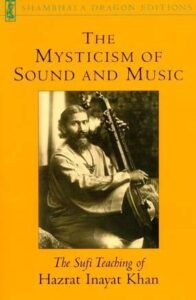
Today, the legacy of Spiritual Jazz continues to resonate. It has influenced various genres and artists, and its spirit lives on in the works of contemporary musicians who continue to seek a deeper meaning in their art. Spiritual Jazz was more than a musical movement; it was a journey into the soul of music and a testament to the transcendent power of sound.
Development of the “Free Jazz” Style
The development of the “Free Jazz” style marks a radical departure and a revolutionary moment in the history of jazz. Emerging in the late 1950s and gaining momentum through the 1960s, Free Jazz broke away from conventional jazz structures, unleashing a new realm of creative expression. This avant-garde genre shifted the focus from predetermined chords and rhythms to spontaneous, unbound improvisation, offering a musical freedom that was both exhilarating and controversial.
Free Jazz’s origins are often attributed to the pioneering work of artists like Ornette Coleman, whose 1960 album “Free Jazz: A Collective Improvisation” gave the genre its name. However, its roots are deeper, with early traces visible in the works of Charles Mingus and even earlier in the bebop movement. It was Coleman, along with Cecil Taylor, John Coltrane, Albert Ayler, and Sun Ra, who became the torchbearers of this new, uncharted jazz style.
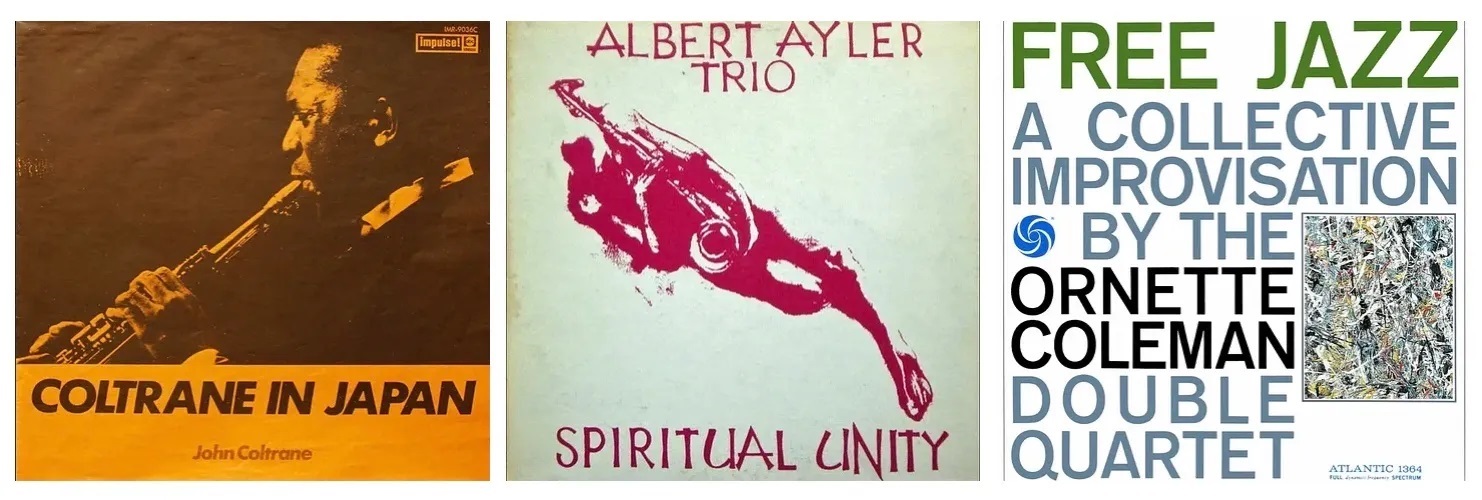
The hallmark of Free Jazz was its abandonment of fixed chord changes and tempos. Musicians embraced an improvisational approach that valued individual expression and collective interaction over formal structure. This led to the creation of music that was often intense, atonal, and highly dynamic. The emphasis was on creating new sounds and textures, sometimes using unconventional techniques and non-traditional instruments.
Free Jazz was more than a musical style; it was a reflection of the social and cultural upheavals of its time. The civil rights movement, the push for artistic and personal freedom, and a growing interest in non-Western philosophies all influenced the ethos of Free Jazz. Musicians saw themselves as part of a larger movement, using their music as a tool for expression, protest, and exploration.
Despite its groundbreaking nature, Free Jazz was met with mixed reactions. While some hailed it as a profound innovation, others criticized it for its perceived lack of melody and structure. Nonetheless, its impact on the jazz world and beyond is undeniable. Free Jazz opened the doors to new possibilities in musical expression, influencing subsequent generations of musicians across various genres.
Today, Free Jazz stands as a testament to the spirit of experimentation and the relentless pursuit of artistic freedom. It remains a vital and influential part of the jazz tradition, celebrated for its boldness and its challenge to the conventional boundaries of music.
Solo Career and Notable Albums
Sanders’ solo career took flight in the late 1960s and early 1970s, a period marked by a surge of creativity and experimentation in jazz. His albums from this era are not just collections of music; they are profound explorations of spirituality, African heritage, and the avant-garde. Among his most celebrated works is the album “Karma” (1969), which includes the iconic and meditative track “The Creator Has a Master Plan.” This piece, in particular, encapsulates Sanders’ ability to blend jazz with spiritual and emotive elements, creating a sound that was both innovative and deeply resonant.
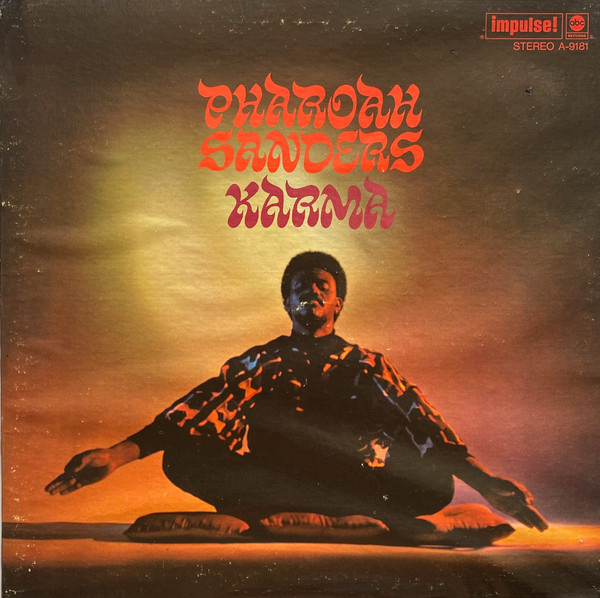
Another notable album, “Thembi” (1971), showcases Sanders’ continued exploration into the realms of free jazz and spiritual music. The album is named after his son and is indicative of Sanders’ personal and introspective approach to music-making. Each track in “Thembi” is a testament to his skill in fusing diverse musical elements – from African rhythms to avant-garde jazz – into a coherent and captivating whole.
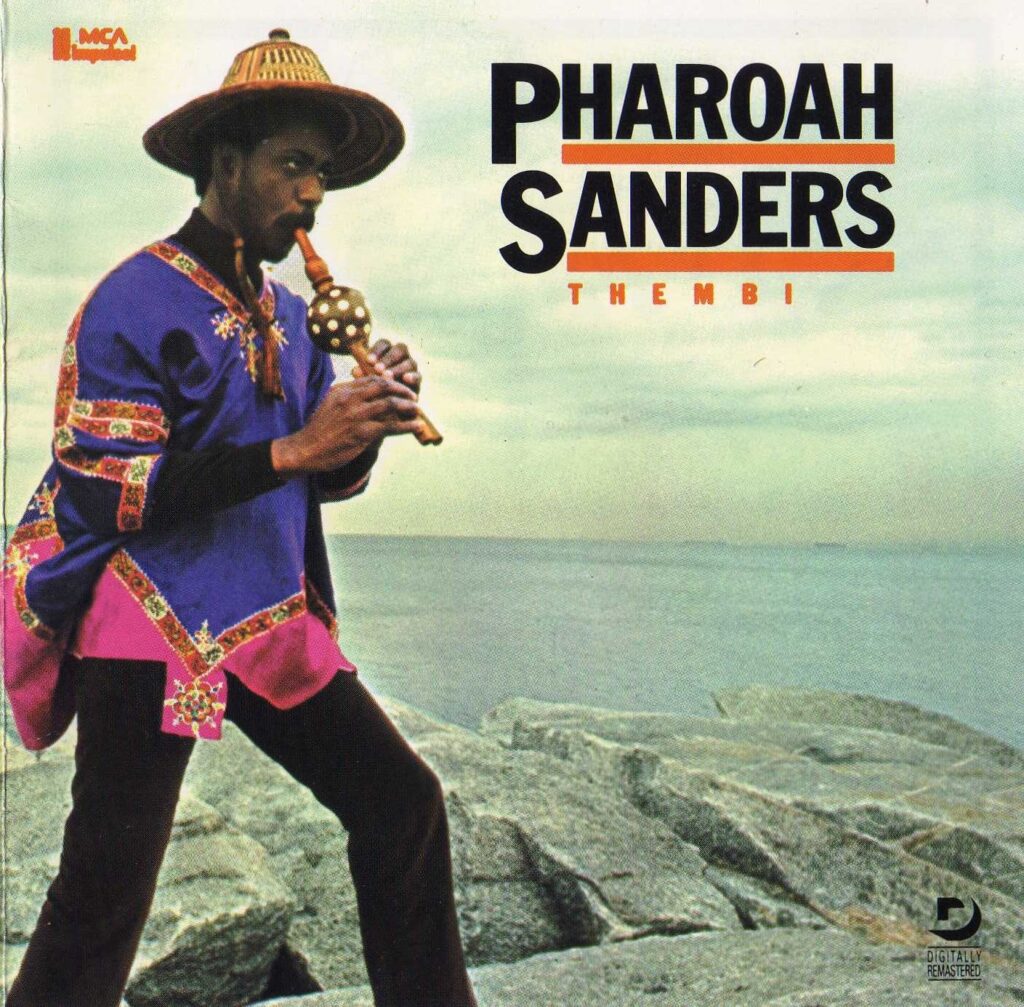
Sanders’ solo albums are not just significant for their musical content but also for their impact on the jazz genre and beyond. His work has influenced countless musicians and continues to inspire new generations of artists. The albums stand as milestones in the evolution of jazz, representing a period when the genre was boldly reimagined and redefined.
Signature Sound and Technique
At the core of Sanders’ signature sound is his innovative approach to the tenor saxophone. He is known for his overblowing technique, which produces a raw, intense sound that is both powerful and expressive. Sanders often employs multiphonics, a method where multiple notes are played simultaneously, adding a rich, complex texture to his music. This approach, combined with his use of harmonic scales and modal structures, gives his music a distinct, spiritual quality.

Sanders’ technique is not just about the notes he plays but how he plays them. His phrasing often conveys a deep sense of emotion, ranging from plaintive wails to ecstatic joy. This emotional connection with the music is a hallmark of his style, making his performances not just a listening experience but an emotional journey
Another aspect of Sanders’ technique is his ability to seamlessly blend different musical influences. His music often incorporates elements of African rhythms, free jazz, and traditional jazz, creating a sound that is both avant-garde and deeply rooted in jazz history.
Influence on Jazz and Other Genres
In jazz, Sanders is celebrated for his innovative approach to saxophone playing and his contributions to the development of free and spiritual jazz. His techniques, particularly his use of overblowing and multiphonics, have inspired countless jazz musicians. Sanders also played a pivotal role in the progression of modal jazz, influencing the genre’s evolution with his experimental and emotive style.
Beyond jazz, Sanders’ influence permeates various genres. His emphasis on spirituality and emotional expression in music has resonated with artists in genres like rock, R&B, and even hip-hop. His explorative spirit, particularly in merging different musical traditions and elements, has inspired musicians seeking to break conventional boundaries.
Musicians as varied as Prince to Marvin Gaye to Iggy Pop cite him as a pivotal influence.
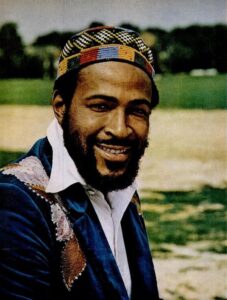

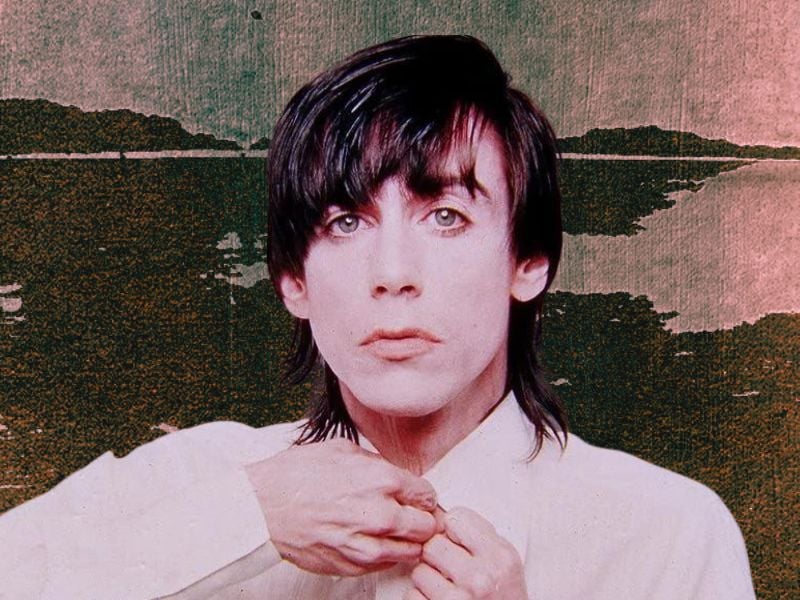
Sanders’ impact is also evident in the world of electronic music, where his experimental approach to sound and rhythm has been a source of inspiration. The echo of his work can be heard in the rhythmic complexities and improvisational elements that characterize much of today’s electronic music.
Awards and Recognition
Pharoah Sanders’ journey in jazz is marked by numerous awards and recognitions, reflecting his profound impact on the genre. Sanders’ innovative approach to saxophone playing and his unique blend of spiritual and free jazz have earned him widespread acclaim in the jazz community and beyond.
Among his notable accolades are the prestigious Jazz Journalists Association Jazz Awards, which he has received multiple times. These awards are a testament to his skill, innovation, and influence in jazz music. Additionally, Sanders has been nominated for various other jazz music awards, celebrating his contributions to the evolution of the genre.

NEA Jazz Masters Fellowship (2016): Sanders was honored with this prestigious National Endowment of the Arts award, which is one of the highest honors in jazz, recognizing his outstanding contributions to the art form.
Grammy Award Nomination for ‘Love Will Find a Way’ (1978): Sanders was nominated for a Grammy Award for Best Jazz Performance for his album ‘Love Will Find a Way.’
DownBeat Magazine Critics Poll Awards: Over the years, Sanders won multiple awards in the DownBeat Critics Poll, recognized for his exceptional saxophone playing.
Jazz Journalists Association Jazz Awards: Sanders was a frequent recipient of these awards, celebrated for his innovative contributions to jazz.
Lifetime Achievement Award from Jazz Foundation of America (2013): This award recognized Sanders’ lifetime of contributions to jazz music and his influence on the genre.
The Vision Festival’s Lifetime Achievement Award (1999): Awarded for his pioneering work in the development of spiritual jazz.
Rhapsody & Blues Award by the Rhythm & Blues Foundation (2000): Recognizing Sanders’ influence on the fusion of jazz, rhythm, and blues genres.
Sanders’ work also received recognition outside of traditional jazz circles, illustrating the crossover appeal of his music. His albums and performances have been lauded for their creative excellence and have played a pivotal role in shaping modern jazz music.
Later Career and Legacy of Pharoah Sanders
In the later stages of his career, Pharoah Sanders continued to be a monumental figure in jazz, effortlessly bridging the gap between the traditional and the avant-garde. His music remained a beacon of innovation and spiritual exploration.
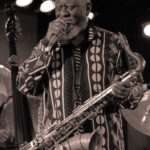

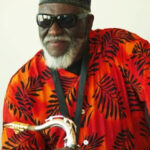

Even as he advanced in age, Sanders never ceased to explore and innovate. His performances and compositions during this period showcased a blend of traditional jazz elements with more modern sounds, including influences from electronic and world music.
Sanders showed a remarkable ability to adapt and stay relevant, often collaborating with younger musicians and artists. These collaborations not only added to his rich discography but also helped introduce him to a new generation of jazz enthusiasts.
Sanders’ influence extended well beyond jazz. His approach to improvisation and his spiritual sound have been cited as an influence by artists in genres ranging from hip-hop to ambient music.
Sanders was not just a performer but also a mentor to many young musicians. His teachings and musical philosophies continue to inspire and shape the world of jazz.
Sanders’ legacy is one of boundless creativity and spiritual depth. His music continues to be celebrated for its emotional intensity and its ability to connect listeners to a higher plane of consciousness.
Pharoah Sanders’ later career solidified his status as one of the most influential and pioneering figures in jazz history. His music and legacy continue to resonate, capturing the hearts of listeners around the world.
Pharoah Sanders’ Most Famous Songs and Compositions
“The Creator Has a Master Plan”: This iconic piece from the album “Karma” is perhaps Sanders’ most renowned composition. A long-form spiritual jazz piece, it combines improvisational saxophone solos with choral arrangements and a repetitive, hypnotic rhythm. This video is a performance from Leverkusen, Germany, 19th October 1999
“Astral Traveling”: From the album “Thembi,” this track is a remarkable example of Sanders’ ability to blend various instruments and sounds to create a unique sonic landscape.
“Upper Egypt & Lower Egypt”: Featured in the album “Tauhid,” this composition showcases Sanders’ exploratory nature, blending Middle Eastern influences with avant-garde jazz.
“Thembi”: Named after his daughter and The title track of the album of the same name, “Thembi” is a serene, melodious composition that highlights Sanders’ softer, more contemplative side.
His Albums As Leader
“Tauhid” (1966): This album marks Sanders’ first release as a bandleader, showcasing his transition from hard bop to more avant-garde styles.
“Karma” (1969): Featuring the iconic “The Creator Has a Master Plan,” this album is a high point in Sanders’ career, blending spirituality and jazz.
“Thembi” (1971): Named after his daughter, “Thembi” is a diverse mix of sounds and instruments, including the African thumb piano.
“Black Unity” (1971): A single, continuous track, this album is a powerful statement in the free jazz genre.
“Jewels of Thought” (1969): This album furthers Sanders’ exploration of spirituality in music.
“Elevation” (1974): Known for its calming, meditative soundscapes, “Elevation” is a departure from his earlier, more intense works.
“Pharoah” (1977): This album includes the popular track “You’ve Got to Have Freedom,” a staple in Sanders’ live performances.
“Journey to the One” (1980): A double LP, this album encompasses everything from ballads to free-form jazz pieces.
“Heart is a Melody” (1982): Featuring vocalist Leon Thomas, this album includes a memorable live performance of “The Creator Has a Master Plan.”
Major-Label Return with Verve Records (1995): In 1995, Sanders made a significant return to a major label when Verve Records released his album “Message”. This marked a pivotal moment in his later career, reintroducing his music to a broader audience
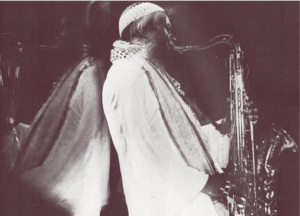
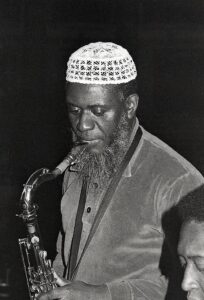
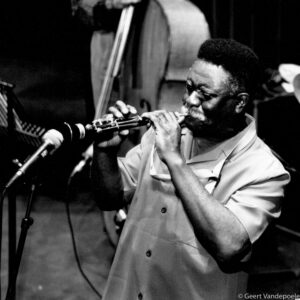
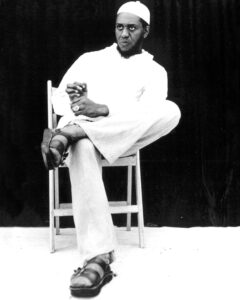
Here’s the full list of his albums as leader and the chronology of their release
- Pharaoh (1965)
- Tauhid (1967)
- Jewels of Thought (1969)
- Karma (1969)
- Izipho Zam (My Gifts) (1973)
- Deaf Dumb Blind (Summun Bukmun Umyun) (1970)
- Thembi (1971)
- Black Unity (1971)
- Live at the East (1972)
- Wisdom Through Music (1972)
- Love in Us All (1973)
- Village of the Pharoahs (1973)
- Elevation (1974)
- Pharoah (1977)
- Love Will Find A Way (1977)
- Journey to the One (1980)
- Beyond A Dream (1981)
- Rejoice (1981)
- Pharoah Sanders Live (1982)
- Heart Is a Melody (1983)
- Shukuru (1985)
- Africa (1987)
- Oh Lord, Let Me Do No Wrong (1987)
- A Prayer Before Dawn (1987)
- Moon Child (1989)
- Welcome to Love (1991)
- Crescent with Love (1992)
- Message From Home (1996)
- Save our Children (1999)
- Spirits (2000)
- With A Heartbeat (2003)
- Promises (2021)
Some Contributions As A Sideman
Pharoah Sanders, renowned for his distinctive tenor saxophone sound and spiritual approach to jazz, contributed to numerous albums as a sideman, working with some of the most influential jazz musicians of his time. Here are some notable albums where he played a significant role:
John Coltrane – “Ascension” (1965): Sanders’ work with John Coltrane is perhaps the most significant of his sideman contributions. “Ascension” is a landmark in avant-garde jazz, where Sanders’ intense and passionate playing style is prominently featured.
John Coltrane – “Meditations” (1965): Another critical album with Coltrane, “Meditations,” showcases Sanders’ powerful and emotive saxophone work.
Alice Coltrane – “Journey in Satchidananda” (1970): Sanders collaborated with Alice Coltrane on this album, contributing his signature tenor saxophone sound to the title track and others.
Alice Coltrane – “Ptah, the El Daoud” (1970): Sanders’ playing adds depth and texture to this spiritually-infused album.
Sun Ra and His Arkestra – “Featuring Pharoah Sanders and Black Harold” (1976): This recording captures Sanders’ early career collaboration with the avant-garde bandleader and composer Sun Ra.
Don Cherry – “Symphony for Improvisers” (1966): Sanders contributed to this album, showcasing his versatility and ability to adapt to different jazz styles.
McCoy Tyner – “Expansions” (1968): Sanders’ contribution to McCoy Tyner’s album added a unique flavor to the pianist’s explorative compositions.
Leon Thomas – “Spirits Known and Unknown” (1969): On this album, Sanders’ playing complements Thomas’ vocal innovations in the genre of spiritual jazz.
Sanders’ role as a sideman on these albums not only highlights his incredible talent and versatility but also his significant contributions to the evolution of jazz music. His collaborations with other jazz greats helped shape the sound of avant-garde and spiritual jazz in the 1960s and beyond.
Pharoah Sanders’ Impact on Musicians
Innovative Saxophone Techniques: Sanders was known for his unique multiphonic approach to the saxophone. His ability to create a range of sounds, from harmonious melodies to intense, chaotic bursts, inspired saxophonists and other instrumentalists to explore new techniques and sounds in their playing.
Spiritual Jazz Movement: Sanders was a key figure in the development of spiritual jazz, a genre that blends jazz with elements of spirituality, often influenced by Eastern and African musical traditions. His work with Alice Coltrane, notably on albums like “Journey in Satchidananda,” was pivotal in establishing this genre, influencing artists like Kamasi Washington and Shabaka Hutchings.
Collaborations and Influence: Throughout his career, Sanders collaborated with numerous jazz greats, including John Coltrane, McCoy Tyner, and Leon Thomas. These collaborations not only showcased his versatility but also allowed him to impart his musical philosophy to others, fostering a community of musicians who were united in their quest for new, expressive forms of jazz.
A Mentor to Young Musicians: Sanders’ willingness to work with and mentor younger musicians helped to ensure the continuity and evolution of jazz. Musicians like Lonnie Liston Smith, who played with Sanders, went on to have significant careers, often citing Sanders as a key influence.
Expanding Jazz’s Boundaries: Sanders’ fusion of different musical elements, including the use of electronic instrumentation in albums like “Thembi,” showed other musicians the potential for jazz to evolve and incorporate diverse sounds, thus broadening its appeal and influence.
Inspiration Beyond Jazz: His influence wasn’t confined to jazz alone; it extended into other genres like rock, hip-hop, and world music. Artists outside of jazz have sampled his work or cited him as an inspiration, demonstrating his wide-reaching impact on the music world.
Sanders’ legacy is that of a trailblazer who not only advanced the boundaries of jazz but also inspired musicians to explore their spirituality and creativity without limits.
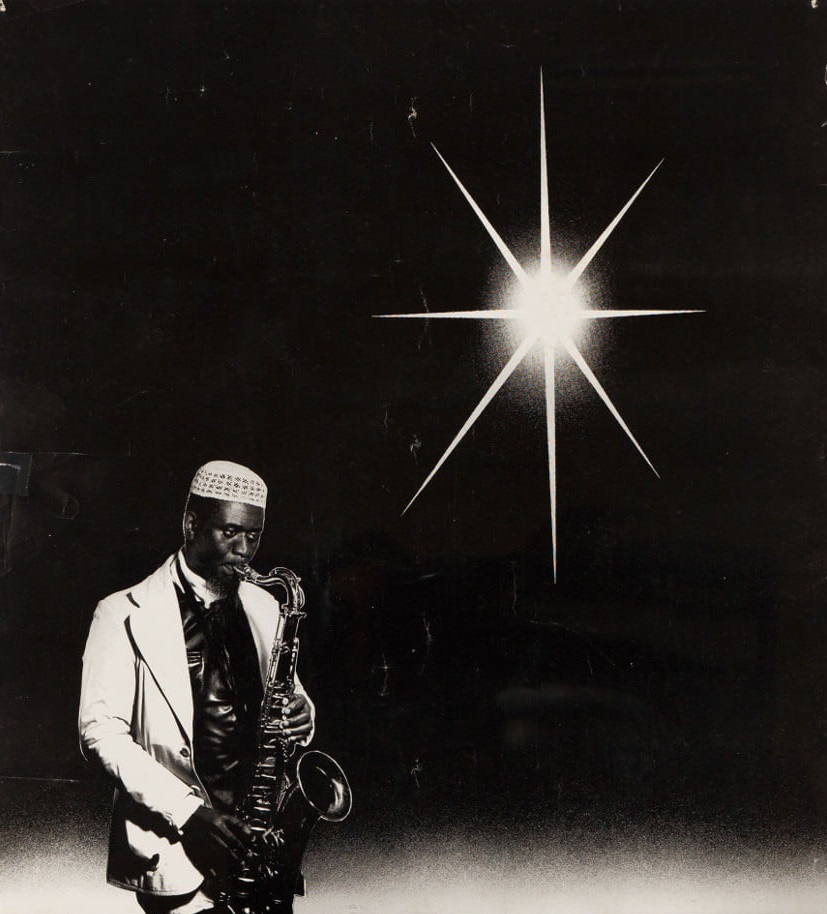
His Enduring Influence on Jazz
Pharoah Sanders, with his unique and profound contributions to jazz, left an indelible mark on the genre. His journey through the realms of free jazz and spiritual music not only showcased his extraordinary talent but also his deep quest for musical exploration. Sanders’ work resonated with a sense of exploration and spiritual depth, pushing the boundaries of what jazz could be.
Sanders’ legacy is one of fearless innovation. He dared to explore sounds and styles that many of his contemporaries shied away from. This exploration was not just a musical endeavor but a spiritual one, deeply rooted in his personal beliefs and experiences. His music, often described as ‘spiritual jazz’, blended elements of traditional jazz with more avant-garde and international influences, creating a sound that was both revolutionary and timeless.
His collaborations with other giants of jazz like John Coltrane and Alice Coltrane are legendary, but it was his solo work that truly showcased his brilliance. Albums like “Karma,” “Tauhid,” and “Jewels of Thought” continue to inspire and influence musicians and jazz enthusiasts worldwide. Sanders’ ability to convey deep emotion and spiritual longing through his saxophone was unparalleled, making his music a conduit for something much larger than mere sound.
Sanders’ influence extends beyond jazz, touching various genres and artists, and inspiring a new generation of musicians. His approach to improvisation, his exploration of non-Western musical traditions, and his commitment to expressing his spirituality through music have influenced artists in jazz, hip-hop, electronic, and experimental music. The impact of his work is evident in the contemporary jazz scene, where elements of his style can still be heard.
Pharoah Sanders was not just a musician; he was a visionary whose work transcended the conventional boundaries of jazz. His legacy is a testament to the power of music to explore and express the deepest aspects of human experience. His enduring influence on jazz and beyond ensures that his spirit and his music will continue to inspire for generations to come.
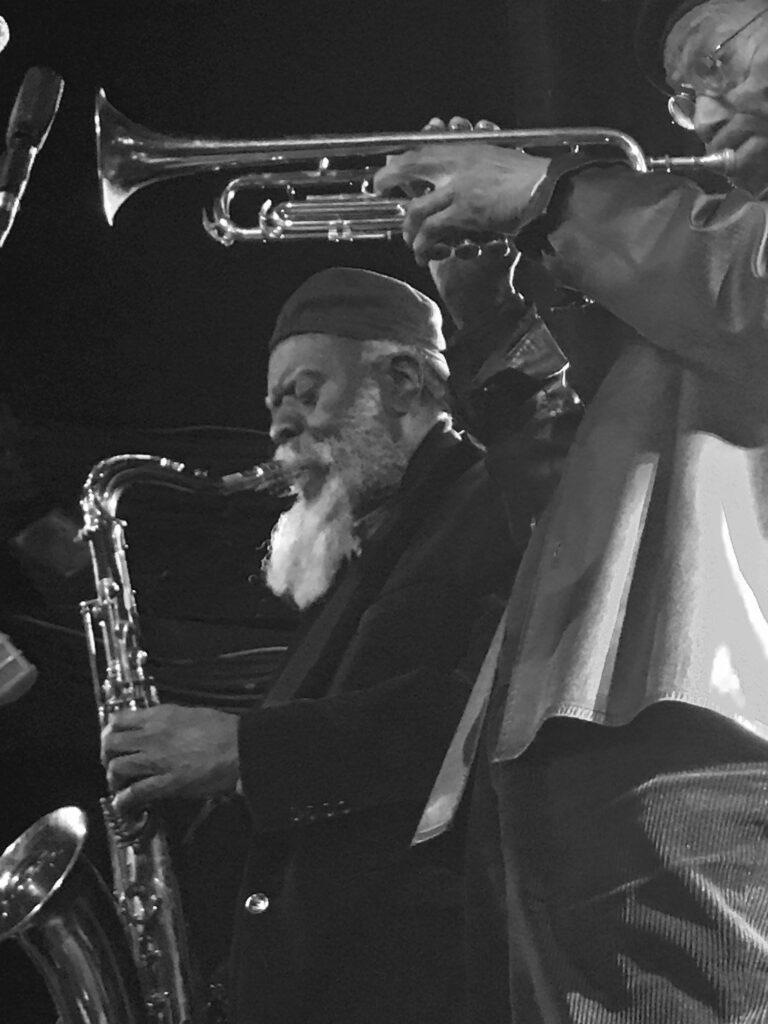
His Last Years and Death
Pharoah Sanders, in his final years, continued to embody the essence of a true jazz legend. His journey in the world of jazz, marked by innovation, spirituality, and a deep connection with his music, never waned. Even as he aged, Sanders maintained a presence in the music world that was both relevant and deeply influential.
As he navigated through his later years, Sanders’ music evolved while still retaining the spiritual depth and exploratory nature that defined his earlier works. His ability to adapt and continue to inspire was a testament to his undying passion for jazz. He remained an active performer, captivating audiences with his powerful saxophone playing and his profound musical expressions.
Despite the challenges that come with age, Sanders never lost his touch. His performances were still charged with the same intensity and passion that had always been his trademark. His later works and collaborations continued to push the boundaries of jazz, incorporating modern elements while staying true to his unique style.
Pharoah Sanders passed away on September 24, 2022, at the age of 81 at his home in Los Angeles. The specific cause of his death was not immediately disclosed at the time of the reports.
Sanders’ death marked the end of an era in jazz, but his influence continues to resonate. The news of his passing was met with tributes from across the globe, underscoring the impact he had on the jazz community and music lovers alike. His legacy lives on through his extensive discography, his influence on other musicians, and the memories of those who had the privilege of experiencing his live performances.


